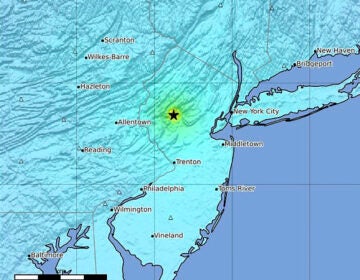This is what the world looks like if we pass the crucial 1.5-degree climate threshold
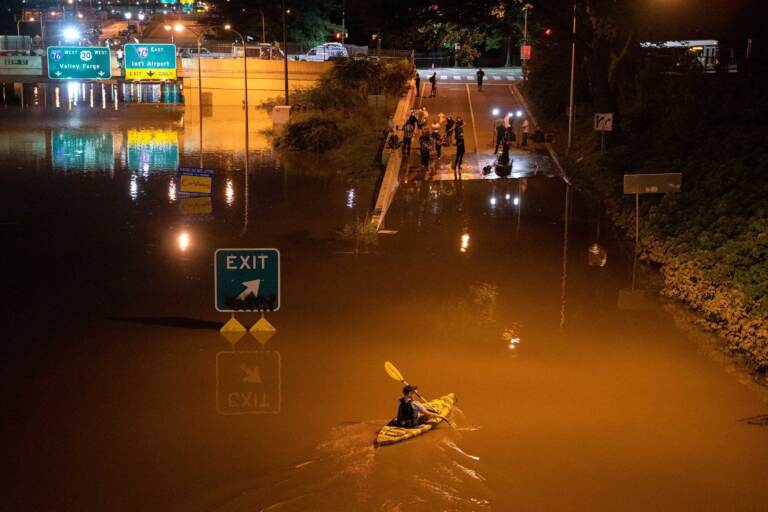
A kayaker paddles down a portion of I-676 after flooding from heavy rains from hurricane Ida in Philadelphia. (BRANDEN EASTWOOD/AFP via Getty Images)
There’s one number heard more than any other from the podiums at the United Nations climate summit in Glasgow, Scotland: 1.5 degrees Celsius.
That’s the global climate change goal world leaders agreed to strive for. By limiting the planet to 1.5 degrees Celsius, or 2.7 degrees Fahrenheit, by 2100, the hope is to stave off severe climate disruptions that could exacerbate hunger, conflict and drought worldwide.
The 1.5 degree target has long been championed by developing nations, where millions of people are among the most vulnerable to climate change. At the 2015 Paris climate negotiations, they pushed industrialized countries to improve on the 2 degrees Celsius goal held at the time, since wealthier nations are responsible for most greenhouse gas emissions since the Industrial Revolution.
At the climate negotiations now underway, nations are touting new commitments to cut their heat-trapping emissions by switching to clean energy and reducing deforestation. India is pledging, for the first time, to be carbon neutral by 2070. More than 100 countries, including the United States, joined a global pact to cut methane, a potent greenhouse gas.
Still, added together, the recent pledges don’t go far enough. Even with more ambitious emissions cuts from some countries, warming is still on track for more than 2 degrees Celsius (or 3.6 Fahrenheit) by the end of the century. The Earth is already 1.1 degrees Celsius hotter than 150 years ago.
Though a half-degree Celsius difference in temperature might seem inconsequential, the difference for life on Earth could be huge. Here’s what scientists expect, if average global temperatures exceed 1.5 degree Celsius warming by 2100.
Coral reefs face almost complete die-off
Off the coast of Australia, the Great Barrier Reef is known for being large enough to be seen from space. It’s the size of Germany — a biodiversity hotspot that was once thought to be too big to fail. But over the last few decades, marine biologists like Ove Hoegh-Guldberg of the University of Queensland have watched its rapid decline.
“My career is one of going from a period of when it was wonderful and abundant to now, staring down the barrel,” Hoegh-Guldberg says. “We’re staring down the barrel of something really horrific.”
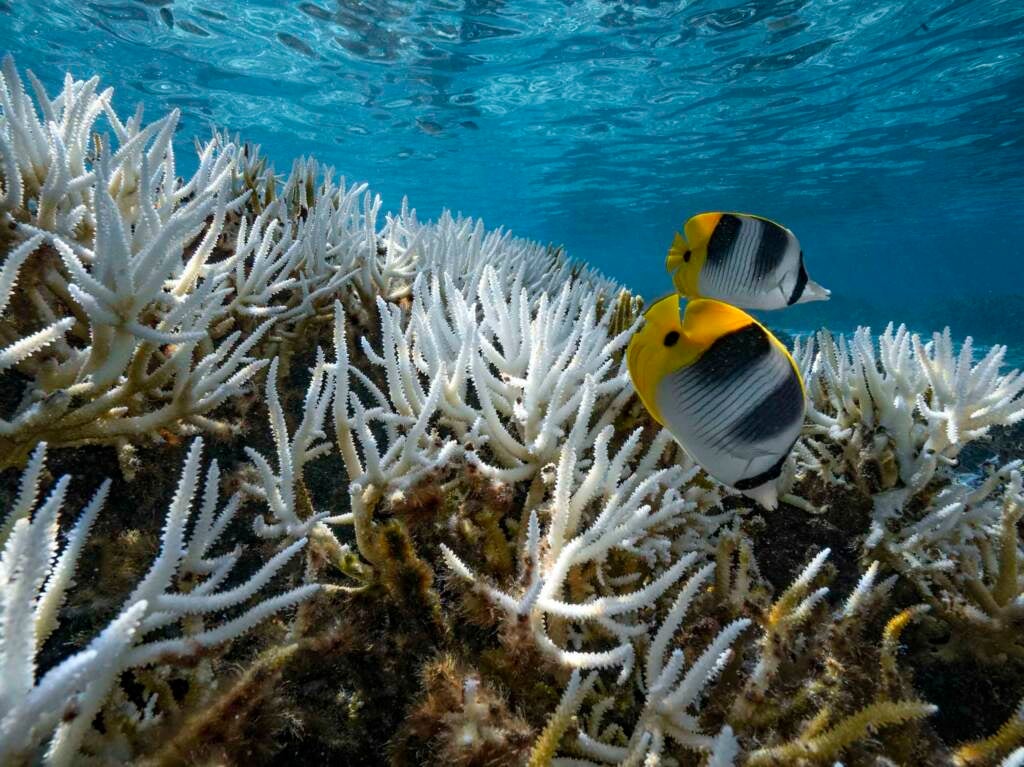
Oceans are warming along with the atmosphere, since they absorb much of the excess heat from climate change. Repeated marine heat waves over the last five years have turned much of the Great Barrier Reef a ghostly white color. When temperatures rise, corals expel the microscopic algae inside them, losing their food source in the process. Sometimes the corals can recover, but increasingly, they’re dying off.
“Something around 50 percent of the shallow water corals were killed literally over a couple of months, in some cases over a couple of weeks,” Hoegh-Guldberg says. “If you extend that out into the future, we’ll get to a point where the damage overwhelms the ability of corals to bounce back.”
Marine heat waves have already doubled since 1980 and are expected to become more intense as temperatures rise. At 1.5 degrees Celsius, it’s likely that 70 to 90 percent of coral reefs will die off worldwide. At 2 degrees Celsius of warming, 99 percent are lost.
“If we delay even a year or two more, we really are going down a pathway where there will be no return,” Hoegh-Guldberg says. “We need to act and we need to act decisively, without question and solve this problem.”
‘Unheard-of’ storms become more common
Water has taken a heavy toll in 2021, all over the world. In September, the remnants of Hurricane Ida swept into the Northeast, killing more than 50 people in New Jersey, New York and other states. Many drowned in cars and basement apartments, overwhelmed by rushing water. In August, two dozen people died when heavy rains caused flash flooding in Tennessee.
Scientists warn that a hotter atmosphere is a wetter atmosphere. Warmer air can hold more water, helping produce more intense rainfall and stronger storms. With ocean temperatures hotter in the Gulf of Mexico, hurricanes are intensifying at a more rapid rate.
As the climate warms, storms once thought to be extremely rare are expected to become more frequent. And the chances don’t just go up a little bit.
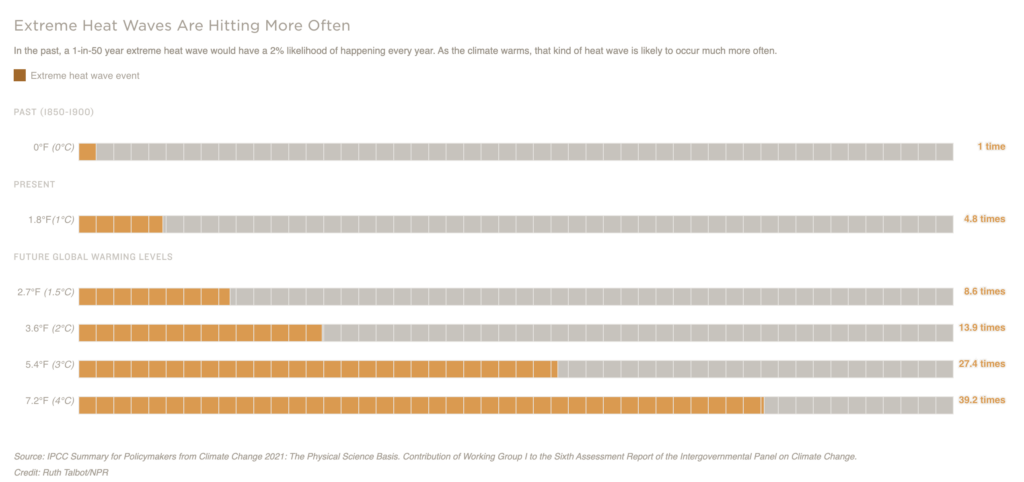
“When we think about the odds, it’s not simply that twice the warming gives you twice the odds,” says Gabriel Vecchi, professor of geosciences at Princeton University. “If we go on a path to 3 degree warming, more and more things that are unheard of or have been unheard of will become relatively commonplace.”
Extreme heat waves follow the same pattern, where a small shift in average temperature leads to a big increase in the number of extreme events. Whether it’s heat or floods, infrastructure like buildings, roads and storm drains were designed to handle the climate of the past. They may not survive the climate of the future.
Melting ice leads to flooded cities
For coastal cities around the world, the future of millions of people depends in large part on the vast volumes of ice sitting on Greenland and Antarctica.
Already, Antarctica and Greenland have lost enough ice to fill Lake Michigan in the last 16 years, according to NASA. That ice melt is raising the level of the oceans, along with melting glaciers and the expansion of the ocean water itself, which happens as it gets hotter. The rise is also accelerating.
Sea levels could rise an additional 1 to 3 feet by 2100, according to the latest report from the Intergovernmental Panel on Climate Change, the UN’s climate research group. The scenario could be much worse if Antarctic ice sheets disintegrate at a faster pace than scientists expect. Still, limiting temperatures to 1.5 degrees Celsius could halve the amount of sea level rise that happens by the end of the century, compared to what’s expected.
More than 4 million people in the U.S. are at risk along coastlines, where higher sea levels would cause bigger storm surges and higher high tides. As the ocean rises, many small island nations around the world are at risk of becoming uninhabitable.
Still, even at 1.5 degree Celsius of warming, scientists warn that storms, heat waves and droughts will be more extreme. And they caution that 1.5 degrees Celsius of warming isn’t a tipping point. For every tenth of a degree the planet gets hotter, the impacts get worse. But on the flip side, every tenth of a degree that’s prevented can be crucial in limiting the extent of future damage.
“There are feasible pathways forward,” Vecchi says. “It is not an inevitable future. There are reasons for hope and despair, I think, is counterproductive.”
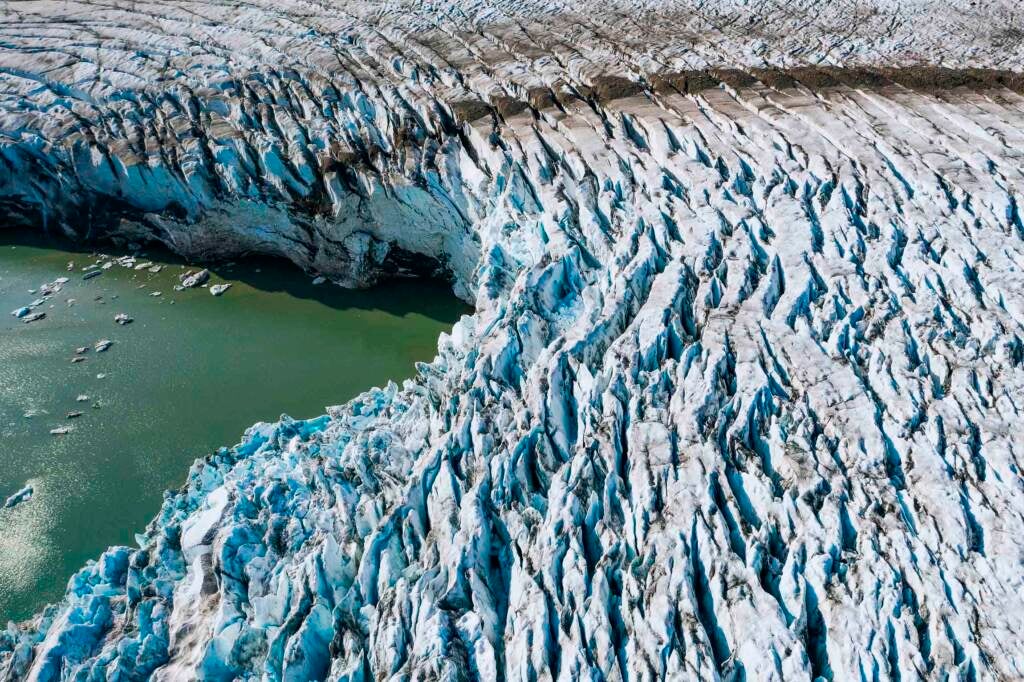
9(MDAzMzI1ODY3MDEyMzkzOTE3NjIxNDg3MQ001))


